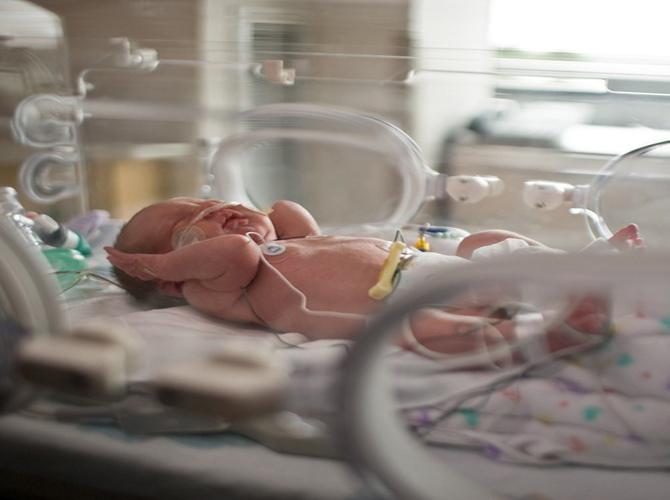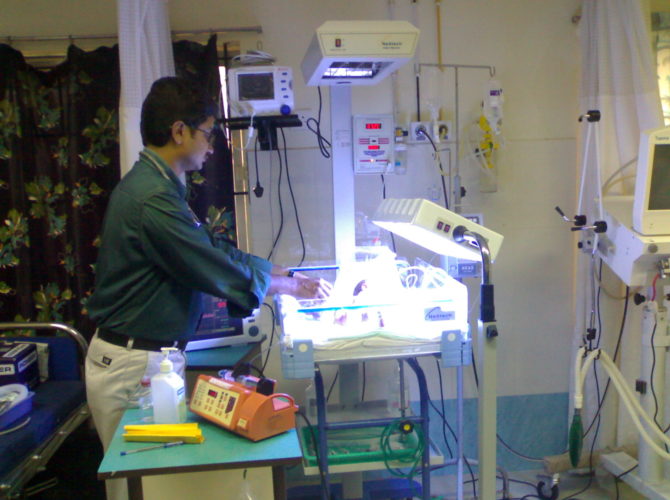Pediatric neonatologist
Neonatal jaundice
Neonatal jaundice or neonatal hyperbilirubinemia, or neonatal icterus (from the Greek word ἴκτερος), attributive adjective: icteric, is a yellowing of the skin and other tissues of a newborn infant. A bilirubin level of more than 85 μmol/l (5 mg/dL) leads to a jaundiced appearance in neonates whereas in adults a level of 34 μmol/l (2 mg/dL) is needed for this to occur. In newborns, jaundice is detected by blanching the skin with pressure applied by a finger so that it reveals underlying skin and subcutaneous tissue.
Neonatal sepsis
Neonatal sepsis is a type of neonatal infection and specifically refers to the presence in a newborn baby of a bacterial blood stream infection (BSI) (such as meningitis, pneumonia, pyelonephritis, or gastroenteritis) in the setting of fever. Older textbooks may refer to neonatal sepsis as “sepsis neonatorum”. Criteria with regards to hemodynamic compromise or respiratory failure are not useful clinically because these symptoms often do not arise in neonates until death is imminent and unpreventable.





